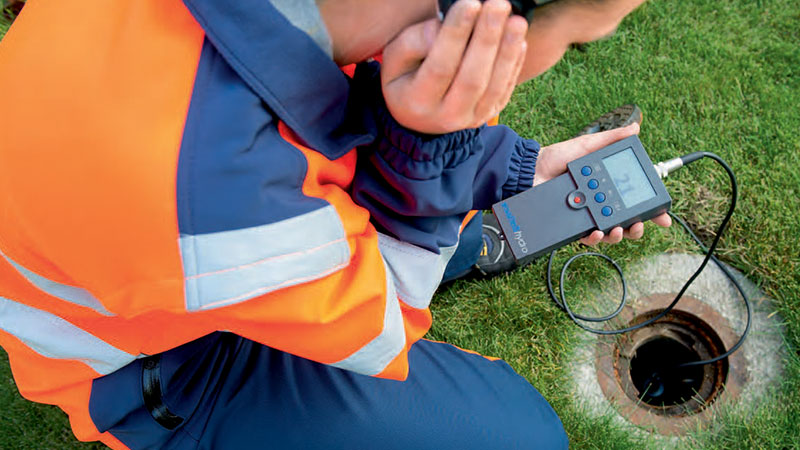Comprehensive Overview to Water Leak Detection for Homeowners and Companies
Cutting-edge Solutions for Early Discovery of Water Leaks in Structures and Facilities
As the stability of structures and facilities is extremely important, the difficulty of very early detection of water leakages has actually spurred cutting-edge options that assure to reinvent the means we secure against potential damages. From cutting-edge leak discovery technologies to the implementation of IoT sensing units for real-time monitoring, the landscape of leak prevention is evolving quickly. Equipment learning algorithms supply a glimpse right into the future of leak prediction, while thermal imaging provides a non-intrusive approach for pinpointing concealed leakages. Automated water circulation evaluation systems are improving how leakages are recognized and addressed, paving the method for an aggressive technique to water leak detection. Each of these options holds the vital to ensuring the dependability and durability of our developed setting, prompting a shift towards a much more lasting and effective future.
Advanced Leak Detection Technologies
Advanced leak detection technologies, equipped with advanced sensors and algorithms, play a critical duty in promptly determining and identifying water leaks in various settings. These modern technologies use a mix of acoustic, thermal, and electromagnetic noticing methods to discover leaks accurately. Acoustic sensing units identify the audio of getting away water, enabling for accurate localization of the leak source. Thermal imaging detects temperature level modifications triggered by water leakage, giving one more effective method for leakage recognition. Electromagnetic sensing units can recognize modifications in magnetic fields triggered by water, supplying yet an additional layer of leak discovery ability.

IoT Sensors for Real-Time Tracking
In the world of modern-day water leak detection, the assimilation of IoT sensing units for real-time monitoring represents an essential innovation in enhancing positive leak discovery capacities. These sensing units offer continuous tracking of water systems, providing real-time data on water flow prices, stress variants, and temperature level adjustments. By leveraging IoT modern technology, these sensing units can find also the tiniest abnormalities in water use patterns, making it possible for very early recognition of possible leakages prior to they intensify right into significant problems.
IoT sensing units transfer data to a centralized platform, where innovative formulas examine the info and produce notifies or notices when irregularities are discovered. This real-time tracking capacity permits homeowner or facility supervisors to without delay resolve leakages, reducing water damages, minimizing repair service costs, and conserving water sources.
Moreover, IoT sensors can be integrated with structure monitoring systems, enabling automatic reactions to spotted leakages, such as turning off water valves or turning on pumps to alleviate the impact of leakages. In general, the implementation of IoT sensing units for real-time tracking significantly boosts the effectiveness and effectiveness of water leak discovery in buildings and framework.
Maker Knowing Algorithms for Leakage Prediction

One trick advantage of utilizing maker discovering for leak forecast is its capability to continuously find out and enhance its accuracy gradually. As more information is gathered and fed into the formula, it can improve its predictions and adjust to altering conditions, ultimately increasing the reliability of leakage detection systems.
Furthermore, equipment discovering formulas can see page assist in identifying refined indications of leakages that may go unnoticed by conventional surveillance techniques. water leak detection. By assessing complicated view it information embed in real-time, these formulas can provide very early cautions and notifies, enabling prompt treatment and preventive maintenance to alleviate possible water damage and associated prices
Utilizing Thermal Imaging for Leakage Discovery
Thermal imaging modern technology supplies a promising approach for discovering water leakages in different systems and facilities. By utilizing infrared radiation and temperature variations, thermal imaging cams can recognize surprise leakages that are not conveniently noticeable to the nude eye.
One of the crucial benefits of thermal imaging for leak detection is its non-intrusive nature. Unlike conventional methods that may require breaking into walls or floors to find leaks, thermal imaging enables non-destructive screening. This not just conserves time and minimizes expenses but likewise reduces disruption to the building or framework being assessed. In addition, thermal imaging can promptly check big locations, supplying a detailed introduction of prospective leak resources in a timely manner. On the whole, the usage of thermal imaging innovation enhances the performance and accuracy of water leakage detection, making it a beneficial tool for preserving the integrity of structures and frameworks. check it out
Automated Water Flow Evaluation Solutions
Just how can automatic water circulation analysis systems revolutionize the detection and management of leakages in various systems and frameworks? Automated water flow evaluation systems offer an aggressive method to leakage detection by constantly checking water flow prices and patterns. By establishing standard data, these systems can promptly identify inconsistencies that may show a leak, making it possible for prompt treatment to avoid substantial damages.
These systems utilize sophisticated formulas to assess real-time data and supply immediate notifies when abnormalities are detected, enabling for speedy activity to be taken. In addition, automated water flow evaluation systems can be incorporated with building management systems or IoT platforms, improving total performance and enabling remote surveillance capabilities.
In addition, the information accumulated by these systems can be made use of for anticipating upkeep functions, helping to recognize possible weak factors in the framework prior to leaks happen. In general, the application of automated water flow evaluation systems can substantially enhance leak discovery and monitoring practices, eventually resulting in cost savings, reduced water wastefulness, and raised sustainability in structures and facilities.

Conclusion
Finally, the combination of advanced leakage discovery innovations, IoT sensors, maker understanding algorithms, thermal imaging, and automated water circulation evaluation systems offers cutting-edge services for early detection of water leakages in buildings and facilities. These innovations allow real-time tracking, prediction of leaks, and efficient detection approaches to avoid water damage and wastage. Implementing these solutions can aid in keeping the honesty and sustainability of water supply in different settings.